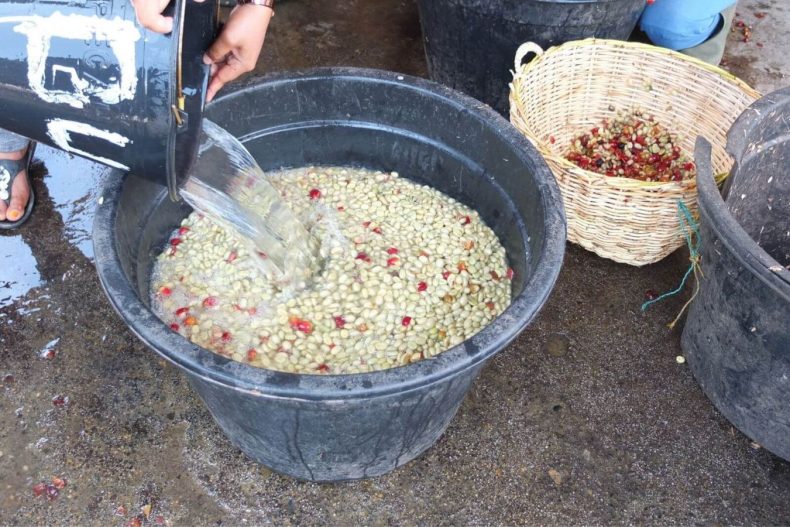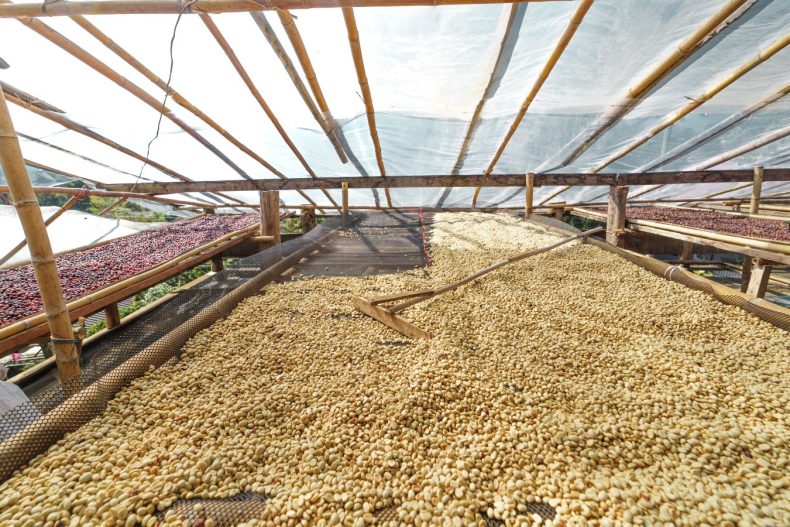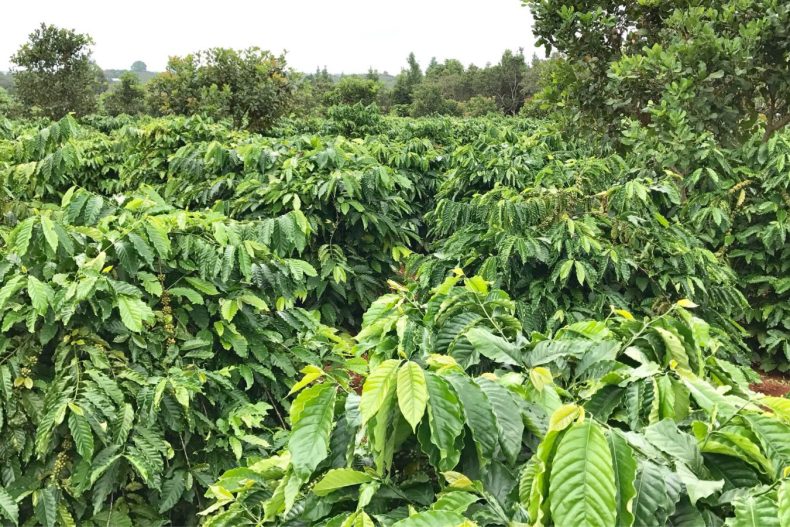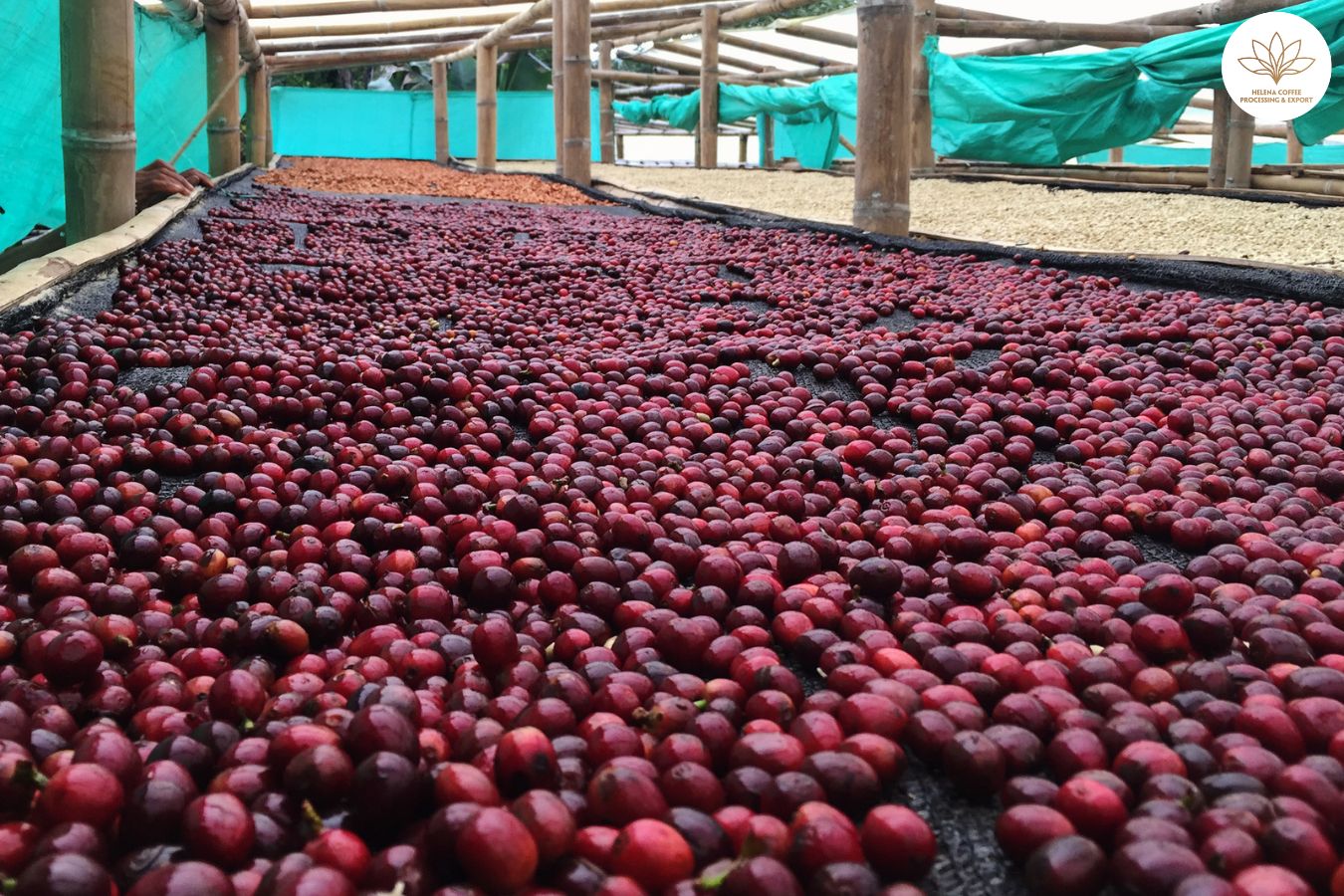
Process 700 Hours Of Dry Processing Of Coffee: The Art of Extended Fermentation in Dry-Processed Coffee: In the realm of coffee cultivation, the processing stage—or pre-processing—is of paramount importance. It’s not only crucial for ensuring the overall quality of the coffee but also for amplifying and introducing unique flavor profiles. The digital era has pulled back the curtain, revealing an array of coffee producers engaging in innovative experimental processing techniques. These methods span from anaerobic fermentation to carbonic maceration, lactic acid fermentation, and even extended fermentation periods that can be impressively long. These avant-garde practices are not only carving new pathways within the coffee industry but also showcasing intriguing parallels with the vinification process in winemaking.
The concept of experimental processing is hardly a stranger to the specialty coffee scene. In numerous coffee-producing regions, the old-world traditions have gracefully intertwined with cutting-edge innovations to elevate both quality and sustainability. The recent surge in novel processing experiments has been noteworthy, with these methods tending to be more intricate than their traditional counterparts due to the increased number of variables and the heightened level of precision required from the producers. Among these innovators is a Colombian producer who has ventured into the realm of prolonged fermentation during the dry processing phase, resulting in one of the most remarkable trials of fermentation lasting upwards of 700 hours—a testament to the boundless potential of coffee processing experimentation.
Refining Flavors Through Aerobic and Anaerobic Coffee Fermentation
As soon as coffee cherries are plucked from the trees, fermentation begins. Yet, it’s only in recent years that producers have strategically harnessed this natural process to cultivate a range of tantalizing new flavors. The terms “anaerobic” and “aerobic” fermentation have become buzzwords in the coffee industry, often used to describe experimental batches of fermented coffee. It’s important to clarify that “fermentation” is inherently an anaerobic process, occurring more gradually in environments devoid of oxygen, such as in tightly sealed containers or tanks. For a deeper dive into these biochemical processes, one can consult the “Biochemical Basis of Coffee Fermentation,” which discusses these phenomena in comprehensive detail.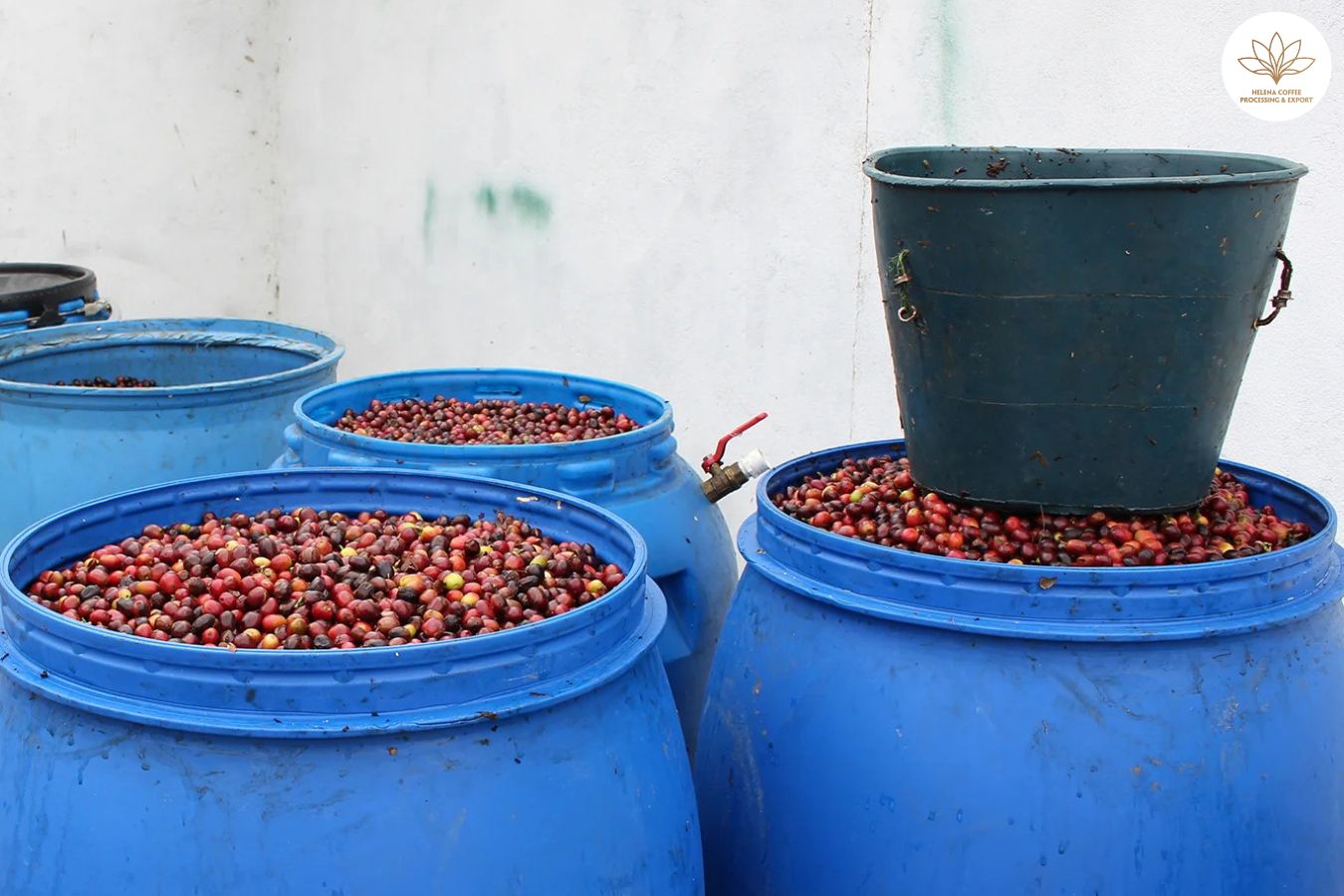
Anaerobic fermentation is initiated by deliberately removing oxygen from the environment, radically transforming the coffee cherries and yielding flavors distinct from those produced by traditional methods. This can involve immersing whole or depulped coffee cherries in water within a container for a set duration before drying. The most straightforward illustration of this is the use of a sealed bin.
During dry processing, coffee is allowed to ferment in airtight barrels or plastic bags, ranging from a week to several months, before undergoing standard drying techniques. In wet processing, depulped coffee is submerged in tanks (with water covering the beans) or placed in sealed barrels or bags for 24 to 72 hours—or even longer, depending on the producer’s preference—before the mucilage is washed away and the beans are dried.
The trend of anaerobic fermentation has seen a rise in popularity, particularly within natural processing methods where the husk of the coffee bean remains intact. In some instances, beans can undergo fermentation for periods as extensive as 96 to 740 hours. Indeed, Omar Arango and Nikolai Fürst of Finca San Luis in Colombia have pioneered this method, fermenting whole coffee beans in sealed containers for an entire month, showcasing the vast spectrum of flavor possibilities through extended fermentation.
Refining the Art of Extended Anaerobic Fermentation in Coffee
Conventional wisdom dictates that excessive fermentation time can ruin coffee, leading to an over-fermentation defect characterized by unpleasant vinegar or alcohol odors—often referred to as ‘stinker’ or ‘sour bean.’ This concern traditionally curtails the length of the fermentation period. Yet, a handful of forward-thinking producers are pushing the envelope by exploring longer fermentation periods using the dry processing method, achieving unexpectedly positive results.
Nikolai Fürst and his collaborators at Finca San Luis have pioneered a method of modulating fermentation by incorporating stages of partial drying to reduce microbial activity. Their process begins with a 36-hour anaerobic fermentation of whole coffee cherries inside GrainPro bags. Following this, the cherries are sun-dried for four days, leading to a significant reduction in moisture that curbs microbial proliferation. The cherries are then placed back into the GrainPro bags to undergo a final 29-day fermentation period. Fürst has observed that this method not only diminishes mold risks but also cultivates unique and desirable flavor profiles in the coffee. Nevertheless, freshly fermented beans can exhibit an off-putting taste; thus, a period of resting—spanning several months—is essential for the beans to stabilize and develop their optimal flavor profile.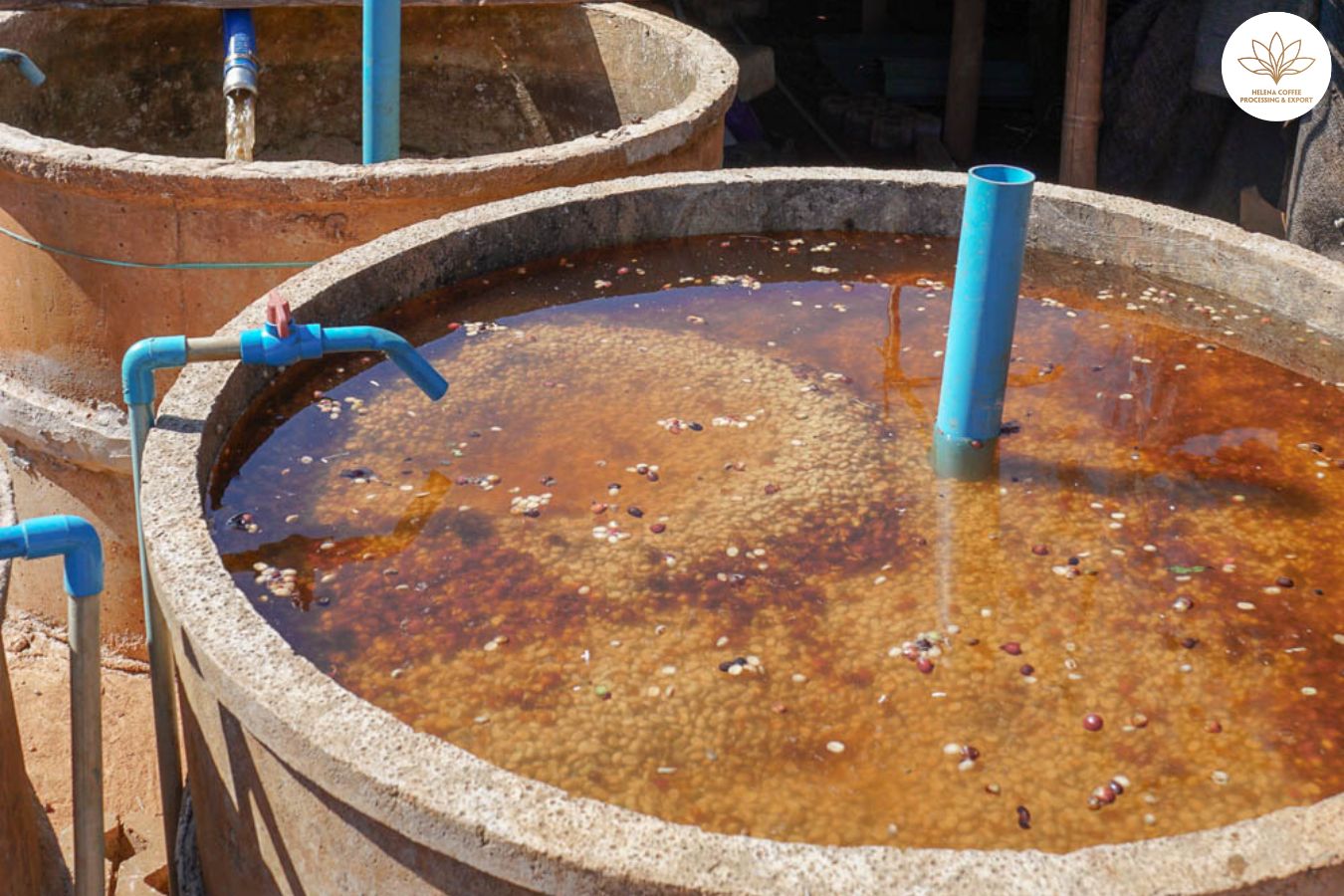
Historically, such extensive fermentation has been viewed as too fraught with risk and difficulty to consistently replicate. However, Fürst has successfully repeated this process three times on his farm, yielding “relatively consistent” results. While these findings are promising, questions remain about the feasibility of applying this method across different farms with their unique microbiomes and environmental conditions. Moreover, the impact of climate is significant: Fürst and Finca San Luis cannot employ this method during the rainy season due to heightened mold growth driven by humidity. Conversely, the dry season’s sunlight aids in mold prevention.
Most coffee fermentation research has concentrated on rapid mucilage removal, with limited exploration into fermentation’s impact on flavor, particularly within the context of naturally processed coffee. There is much to learn about the complex interplay of factors that contribute to successful extended fermentation. As it stands, this innovative approach remains the domain of a few adventurous producers, its full potential yet to be unlocked.
Unlocking the Mysteries of Extended Anaerobic Fermentation
The key to the success of the prolonged anaerobic fermentation method lies in the critical drying phase. This phase, which lasts four days before the 29-day anaerobic fermentation, is essential for reducing the moisture content of the coffee cherries. Lower moisture levels are vital for a successful long fermentation process as they prevent the coffee from spoiling. High humidity—more accurately, high water activity—favors a broad spectrum of microorganisms, but by partially drying the coffee, the growth of many of these, especially bacteria, is inhibited.
In the context of dry-processed coffee, microbial communities differ significantly from those in wet or semi-wet processing, exhibiting much greater diversity. Initially, bacteria, which are present from the moment of harvest and thrive in moist conditions, dominate the microflora of the coffee cherries. As the cherries dry, however, these bacteria are suppressed and eventually supplanted by single-celled yeasts. These yeasts are instrumental in developing the complex flavors in coffee and also play a role in hindering the growth of filamentous fungi, or molds. It is only towards the end of the drying process that these fungi may start to emerge, but proper post-processing storage can prevent any further growth and potential spoilage of the coffee.
By initiating fermentation with a phase of partial drying, this experimental approach promotes the growth of a carefully curated microbial mix, favoring yeasts over bacteria during the fermentation stage.
Understanding the precise conditions that encourage the beneficial activity of yeast over bacteria is crucial for mastering the fermentation process. Without this knowledge, replicating or scaling up this method to other coffee types or locales poses a significant challenge. Scientific research into these specifics is still in its infancy, and the long fermentation technique is currently the province of a few bold producers. Each batch of coffee possesses its own natural microbiome, and a process successful for one batch may not translate effectively to another.
To fully comprehend the nuances of extended fermentation, more research is required. In the interim, extended fermentation remains a calculated risk. Mastery over this process could lead to unexpected and desirable outcomes. We must emphasize, as noted in previous discussions, that longer fermentation does not inherently equate to superior coffee. The aim is to optimize flavor, not merely to prolong the fermentation time.
FAQS:
